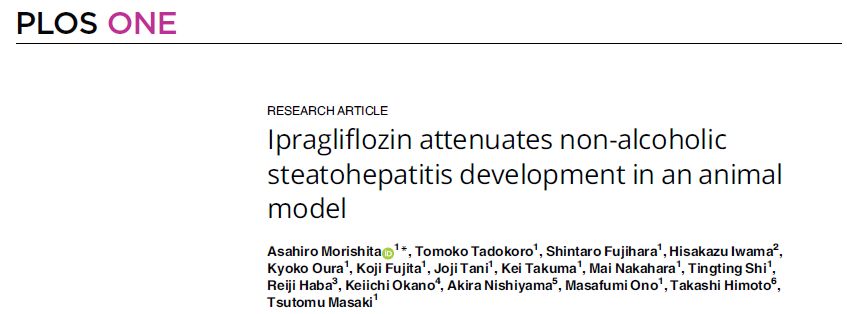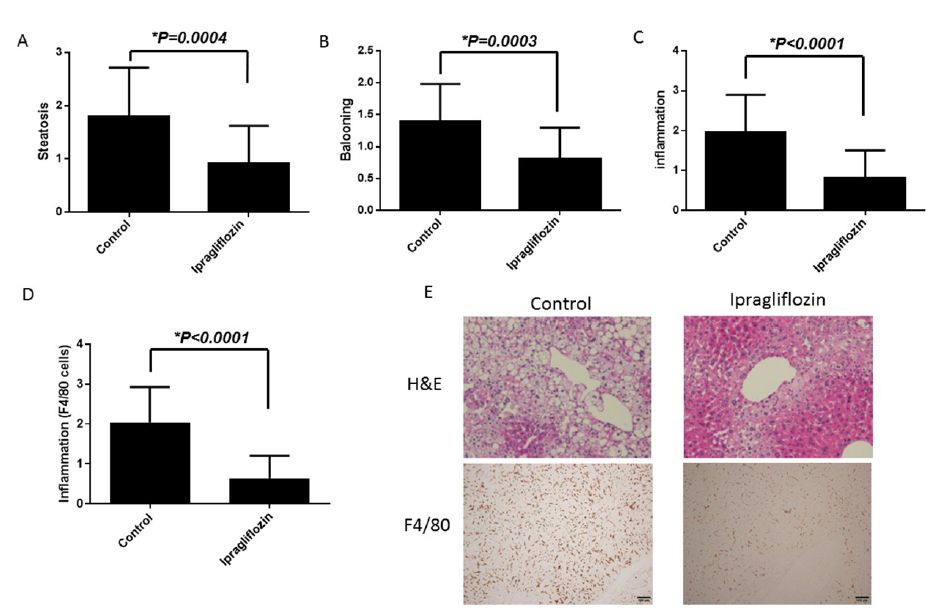Introduction of the paper using NASH model mouse
One of our clients, Kagawa University, has published the results of a study using our non-alcoholic steatohepatitis (NASH) model on the PLOS ONE Journal.

The authors demonstrated that ipragliflozin, an oral selective SGLT2 inhibitor, had a therapeutic effect on the NASH mouse model. Ipragliflozin attenuated the development of steatosis, ballooning, inflammation as well as liver fibrosis.

In addition, their data suggested that ipragliflozin might have attenuated NASH development by improving hyperglycemia by inducing the urinary excretion of glucose and by modulation of miRNAs, miR-19b-3p, to inhibit IL-6 and TNF-a expression. As for the miRNA analysis, another client has previously published a paper investigating the role of miRNA alterations in the pathogenesis of NASH-derived HCC using STAMTM mouse model.
Our STAMTM model was used to conduct the analysis in this paper. The STAMTM model is the world’s first mouse model to show the progression of NASH to liver cancer, and was developed here, at SMC Laboratories. This model shows a pathology similar to human NASH (fatty liver → NASH → liver fibrosis → HCC).
Therefore, the STAMTM model has been used in many efficacy studies, as well as in basic research, and provides a wealth of basic data. Would you like to investigate the expression of the target of your compound in advance and conduct a drug efficacy evaluation study using the STAMTM model? If you are interested in using our STAMTM model, please do not hesitate to reach out!
More about STAMTM mouse
